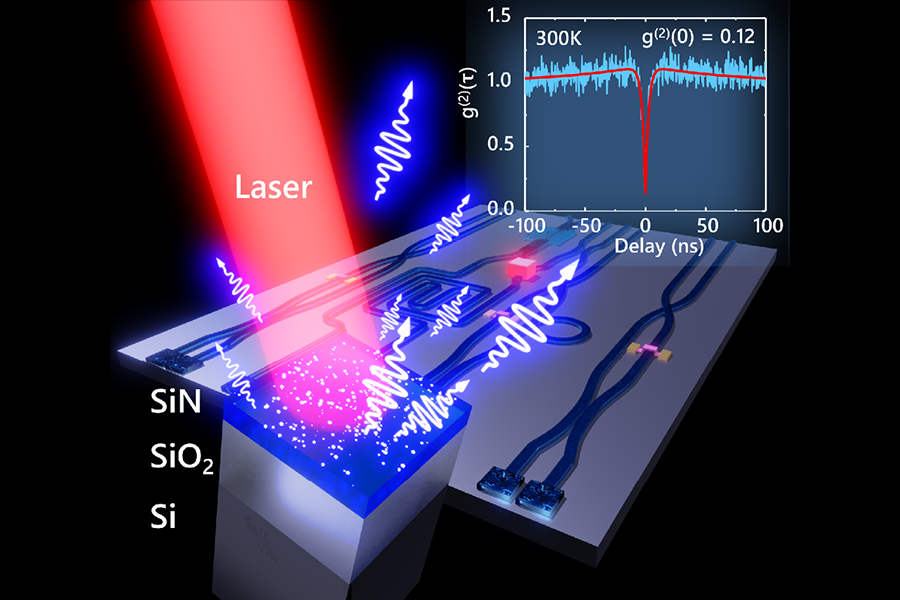Purdue team discovers efficient single-photon emitters in technologically important SiN material platform

A team of Purdue researchers led by professors Vladimir M. Shalaev, Bob and Anne Burnett Distinguished Professor of ECE, and Alexandra Boltasseva, Ron and Dotty Garvin Tonjes Professor of ECE, has discovered single-photon emitters in silicon nitride that have the potential to enable direct, scalable, and low-loss integration of quantum light sources with a well-established on-chip platform.
Alexander Senichev, working in the Shalaev-Boltasseva group is a postdoctoral research associate with Purdue University’s Elmore Family School of Electrical and Computer Engineering. He says single-photon emitters are the building blocks for emerging applications in quantum information technology, quantum sensing, quantum communication and quantum computing. There are plenty of single-photon emission sources, including diamond, hexagonal boron nitride, and semiconducting nanotubes, and they all have advantages and disadvantages. The major stumbling being that these approaches rely on hybrid and heterogenous integration to the on-chip platform. This creates challenges related to scalability, optical losses, and efficient coupling between different photonic elements on one chip. The team believes that the utilization of quantum emitters directly embedded in silicon nitride has the potential to reduce photon losses.
“For quantum information technology applications, it is critical to not lose any single photon,” says Senichev. “There are certain platforms for on-chip photonic circuitry that require a coupling of different materials which results in losses of photons. Having the single-photon emitter already integrated has the potential to drastically reduce these losses and improve the scalability of the system.”

Scalable photonic platforms capable of hosting intrinsic or embedded sources of single-photon emission are of particular interest for the realization of integrated quantum photonic circuits. Since this is a new discovery, the next step for researchers to understand and optimize the properties of single-photon emitters in silicon nitride is to study in detail their nature and learn how to deterministically create and control them. In order to make these single-photon emitters useful, researchers also need to demonstrate the fabrication of different photonic elements, like wave guides, resonators, and couplers.
“Even though the observed rate of emission of single-photons in SiN is high it can be enhanced even more by placing the emitters into different kinds of resonators,” says Senichev. “Purdue’s group is specifically focused on plasmonic enhancements. This would help to generate indistinguishable photons at room temperatures.”
A paper detailing the research is published in Science Advances. The other team members contributed to this work include Zacharian O. Martin, Samuel Peana, Demid Sychev, Xiaohui Xu, and Alexei S. Lagutchev. This work is supported by the U.S. Department of Energy (DOE), Office of Science through the Quantum Science Center (QSC), a National Quantum Information Science Research Center, and NSF ECCS grant 2015025-ECCS.
The researchers have disclosed their single-photon emitters through the Purdue Research Foundation Office of Technology Commercialization, which has filed a patent application. For information on licensing opportunities, contact Will Buchanan of OTC at wdbuchanan@prf.org about 2001-SHAV-69443.
